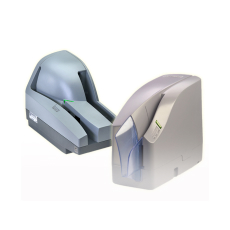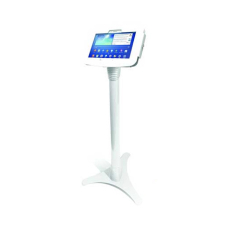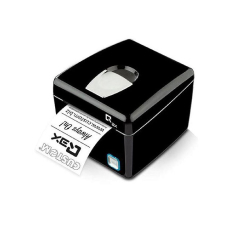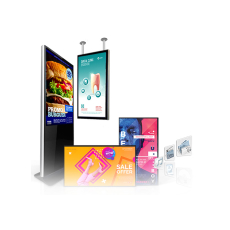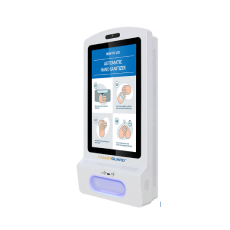
FAQ (Frequently Asked Questions)
A queue management system is a software or an automated solution designed to efficiently manage customer queues in various settings.
This system helps to optimise the process by utilising digital displays, kiosks, and other features to track the queue, provide estimated wait times, and notify customers their turn is approaching. The system helps reduce waiting times, enhances customer satisfaction, and allows businesses to allocate resources more effectively, ultimately improving operational efficiency and service quality.
- Structured queuing system: In this system, customers wait in a physically defined queue, and their order of service is determined by their position in the queue.
- Unstructured queuing system: In this system, customers are served in random order. Queues can be formed spontaneously in multiple directions, but it is also possible that queues are not formed at all.
- Virtual queuing system: In this system, customers do not physically wait in a queue, but rather use technology such as a mobile app or online platform to reserve a spot in line or schedule an appointment.
There are six key characteristics of queuing theory:
- Arrival process: This represents the rate at which customers arrive at a queue. It helps in understanding the frequency and pattern of customer arrivals, which can vary over time.
- Service process: The service process refers to the rate at which customers are served and the time it takes to serve each customer.
- Number of servers: The number of servers refers to the number of agents or resources available to service the queue. The number of servers can significantly impact the queue’s efficiency and waiting times.
- Queue discipline: Queue discipline refers to the order in which customers are served. Common disciplines include First-Come-First-Served (FCFS), Last-Come-First-Served (LCFS), and Priority Queue.
- Queue capacity: Queue capacity represents the maximum number of customers that can be in the queue at any given time.
- Calling population: This refers to the number of customers that can potentially come to the queue.
Here are some things to consider when choosing a queue management system that suits your business.
- Choose the right type of queuing system/method
Depending on your business, there are some queuing systems that are more relevant than others. For details regarding the types of queuing systems, visit the ‘What are the examples of queue systems?’ FAQ page.
- Choose a customisable and configurable solution
Each business has their own unique customer flow. Therefore, consider a QMS that can offer customisable and configurable options that can tailor your business with specific processes.
- Real-Time Monitoring
This is an important feature to have in a QMS. The ability to monitor your business in real time will allow you to make informed business decisions.
- Scalability
Look for a QMS that can adapt to the growing needs of your business. Choosing a QMS that provides no restrictions in their licence to the number of users can reduce the hassle of adding new users in a growing organisation.
- Omnichannel Solutions
There are situations where both physical and/or digital services may be needed. Consider choosing omnichannel solutions that can tend to the needs and requirements of the situation in numerous ways.
- Mobile Optimisation
Choose a QMS that is well-optimised for mobile devices, in other words: mobile compatible. This allows your customers to queue, check-in, and book appointments from anywhere at any time.
- Intelligence Triage
Having a QMS with intelligence triage is very desirable. The ability to connect customers to the right employee and/or services is the key to handling higher demands efficiently.
- System Integration
Consider choosing a QMS that can seamlessly integrate with other applications and systems that already exist in your business such as email logins and employee work applications. This will increase the effectiveness and efficiency of the business.
- Security
The QMS solution must ensure that all customer data is secured and protected.
A queue management system is beneficial for businesses. It can help manage customer flow effectively, reduce wait times, and enhance the overall customer experience. With the help of a queue management system, businesses can ensure that each customer is served in a fair and orderly manner, promoting a positive customer experience. This system also enables businesses to allocate resources more effectively, ultimately improving operational efficiency and service quality.
- Structured queuing system: This type of queuing system is usually applied in grocery stores, banks, and airport security checkpoints where people need to stand in line physically in an orderly manner.
- Unstructured queuing system: This type of queuing system can usually be found in food courts, restaurants, and bus stops.
- Virtual queuing system: This type of queuing system can be implemented in various industries, but it is most beneficial for businesses that deal with a large number of customers/visitors daily with several touchpoints, such as healthcare facilities, government institutions, and colleges.
Effective queue management involves implementing strategies to minimise wait times and maximise customer satisfaction. It is also important to communicate with customers and provide them with accurate estimates of wait times to set expectations and reduce frustration. Additionally, acquiring customer feedback can help gain valuable insights to help manage queues efficiently. All of those can be achieved by leveraging technology such as a queue management system.
In a queue management system, the three operations of a queue are:
- Enqueue: This operation involves adding a new customer to the end of the queue.
- Dequeue: This operation involves removing the customer from the front of the queue and serving them.
- Peek: This operation allows the system to gather information about a customer (such as their status and priority) at the front of the queue without removing them.
Queue management in ITIL (Information Technology Infrastructure Library) is a process that focuses on managing and monitoring service requests and work items within a service desk or IT department. It aims to prioritise and optimise the handling of these requests to ensure they are addressed in a timely and structured manner. Queue management helps allocate resources effectively, maintain service level agreements (SLAs), and enhance overall service quality by minimising delays and improving responsiveness to customer needs.
The four common queuing models are:
- M/M/1 Model: This model represents a queue where customers arrive at a constant rate, are served at a constant rate, and there is a single server. Examples include hotel check-in, car wash, or a bank teller.
- M/M/c Model: This model is similar to the M/M/1 model, but it allows for multiple servers. In this model, customers arrive at a constant rate, are served at a constant rate, and there are multiple servers. Examples include multiple cashiers at a retail store, restaurants, or call centers.
- M/G/1 Model: This model represents a single-server queue where customers arrive at a constant rate, but are served at a variable rate. This model is useful for systems where the service time is unpredictable, such as a repair shop or a hospital emergency room.
- M/D/1 Model: This model represents a single-server queue where customers arrive at a constant rate, but are served at a variable rate that is determined by the priority of the customer. This model is useful for systems where customers have different priority levels, such as a help desk or a hospital emergency room.
The most common type of queuing system is the First-Come-First-Served (FCFS) queue, where customers or tasks are served in the order they arrive, with the first arrival being the first to be served. This system is often used in various real-world scenarios, such as waiting in line at a grocery store or processing tasks in a computer’s task scheduler. This system is simple and easy to implement, but it may lead to issues like long waiting times if there are a large number of customers.
Simple queuing models typically follow these four key assumptions:
- Customers arrive following a Poisson process, which means arrivals occur randomly and independently over time.
- Service times are exponentially distributed, indicating that the time it takes to serve each customer is also random and independent.
- The number of servers is fixed, and the servers work at a constant rate.
- The queue follows a First-Come-First-Served (FCFS) discipline, where customers are served in the order they arrive.
Managing queues is important for any business or organisations that wants to improve their customer’s experience. Here are some tips to help you manage your queues effectively.
- Self-Check-In
Utilizing Self-check-in will greatly increase efficiency by reducing staff workload and greatly reduces wait times.
- Distract your customers
Studies show that distracting your waiting customers with your company’s promotional activities can reduce the customer’s perceived waiting time indirectly.
- Improve the waiting environment
This is another way to indirectly reduce the customer’s perceived wait time. Customers who enjoy both the distractions and waiting environment will have a significantly shorter perceived wait time.
- Offer your customers options
Giving your customers to choose from a variety of options will increase their experience when interacting with your business. One example of this is to give your customers the option of using digital tickets instead of the traditional paper tickets.
- Avoid creating long lines
Long lines could be perceived negatively by your customer by indirectly giving off the effect that they would need to wait for a long period of time before their turn.
- Implement a Queue Management System
Implementing a QMS to your business allows you to streamline your customer journey from start to finish, optimising workflow, and increase the efficiency of your activities.
A queuing structure is mostly used when implementing the First In, First Out (FIFO) queue system. A queue structure has mainly 3 parts. The first entry (the front of the queue) will be the first one to be removed from the queue, the last entry (the rear end of the queue) is the most recent addition to the queue, and the queue itself stores the queue elements. A queue is able to handle multiple data, fast and flexible, and enables businesses to access the front and rear ends of the queue.
The four components of queuing systems are the arrival process, queue or waiting line, the service process, and the departure.
- The Arrival Process: how the customers or tasks will enter the system to be served. There are different types of arrival processes that will differ depending on the business. It is important to understand the arrival process because it is crucial for analysing and optimising the performance of the queuing system. This includes managing waiting times, resource allocation, and service capacity planning.
- Queue or Waiting Line: the line of customers or tasks that are waiting to be served. This is the most basic and fundamental component of a queue and that also describes the buildup for service when the facility or service is busy.
- Service Process: this refers to how the customers or tasks are going to be served by the system. The service process will differ depending on the business and the type of system. It is important to analyse and optimise the service process because it plays an important role in improving the overall performance of the queuing system. This includes reducing waiting times, increasing the system’s throughput, and increasing customer satisfaction.
- Departure: this refers to the process of how the customers or tasks will leave the system once they have been served. Once a customer or task has been completed, it will leave the system. In doing so, they will make new space for new customers or tasks in the queue. The departure process is one of the most important aspects of the queuing system because it directly affects the system’s performance metrics. This includes the average waiting time, customer satisfaction, and system utilisation.
SMARTQUEUE®, a queue management solution from BSS, can provide your business with a variety of advantages. This solution has proven to be beneficial to various businesses across multiple industries. It can help enhance customer experience, improve customer satisfaction, increase efficiency, and optimises business processes.
Here is what your business can expect when implementing SMARTQUEUE®:
- A fully automated multi-channel solution to greatly reduce wait times.
- A customisable and configurable solution made in-house, tailored to the specific needs of your business. In addition, we give our clients the freedom to choose the type of hardware that they desire instead of using our proposed hardware, as long as it meets the required specifications.
- Real-time monitoring capabilities that allow your business to transform raw data into actionable data and make informed decisions. Easily keep track of your KPIs, increase efficiency, and optimise your business operations.
- A scalable queue management system that can meet the growing demands of your business without delays. SMARTQUEUE® is a QMS that provides no restrictions in their licence to the number of users and reduces the hassle of adding new users in a growing organisation.
- SMARTQUEUE® is an omnichannel solution that is capable of providing your business with both physical and digital solutions to address the needs of the situation.
- Complementing the omnichannel solution, SMARTQUEUE® is also optimised for mobile devices. Supply your customers with the ability to make, change, and cancel their appointments via mobile devices. Furthermore, this gives the customers the ability to queue from anywhere and outside of the premises. They will be alerted via SMS when it is almost their turn to be served.
- SMARTQUEUE® allows your business to help manage your customer expectations in terms of wait times with transparency. Customers will get an estimated wait time. This gives them more control over their time. Additionally, SMARTQUEUE® is able to inform customers of traffic for businesses with multiple branches. They are further informed regarding the queue status of a branch and can choose to visit other branches that are not as busy.
- Intelligence Triage with the ability to direct customers to the right employee/service with the right skills. This will enhance the customer service and satisfaction and drastically improve your business’s ability to handle tasks during high demand.
- SMARTQUEUE® seamlessly integrates with systems that exist in your business. Our system aims to improve, optimise, and mesh together with the existing systems in your business.
SMARTQUEUE® values the privacy and security of its clients. We will not use your business data or customer data for anything other than storing it in our systems for it to be used by your business when requested.
